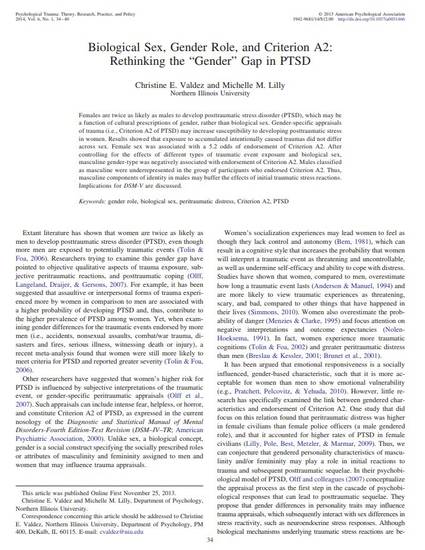
Article
Biological Sex, Gender Role, and Criterion A2: Rethinking the "Gender" Gap in PTSD
Psychological Trauma: Theory, Research, Practice, and Policy
(2014)
Abstract
Females are twice as likely as males to develop posttraumatic stress disorder (PTSD), which may be a function of cultural prescriptions of gender, rather than biological sex. Gender-specific appraisals of trauma (i.e., Criterion A2 of PTSD) may increase susceptibility to developing posttraumatic stress in women. Results showed that exposure to accumulated intentionally caused traumas did not differ across sex. Female sex was associated with a 5.2 odds of endorsement of Criterion A2. After controlling for the effects of different types of traumatic event exposure and biological sex, masculine gender-type was negatively associated with endorsement of Criterion A2. Males classified as masculine were underrepresented in the group of participants who endorsed Criterion A2. Thus, masculine components of identity in males may buffer the effects of initial traumatic stress reactions. Implications for DSM-V are discussed.
Keywords
- gender role,
- biological sex,
- peritraumatic distress,
- Criterion A2,
- PTSD
Disciplines
Publication Date
2014
DOI
10.1037/a0031466
Citation Information
Valdez, C. E., & Lilly, M. M. (2014). Biological sex, gender role, and criterion A2: Rethinking the “gender” gap in PTSD. Psychological Trauma: Theory, Research, Practice, and Policy, 6(1), 34-40. http://dx.doi.org/10.1037/a0031466
